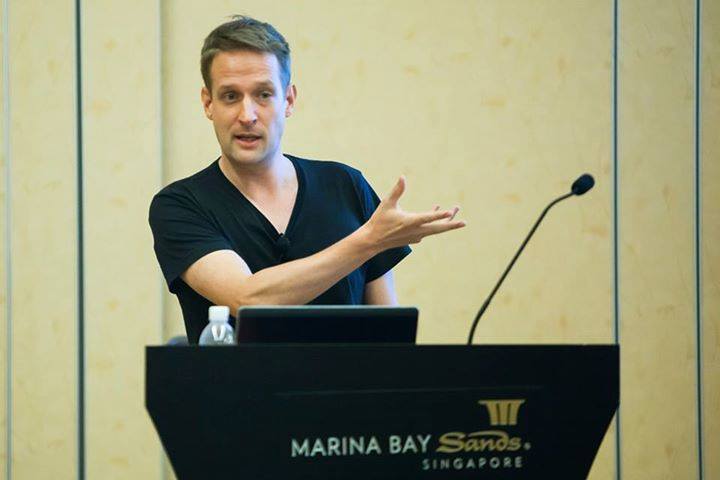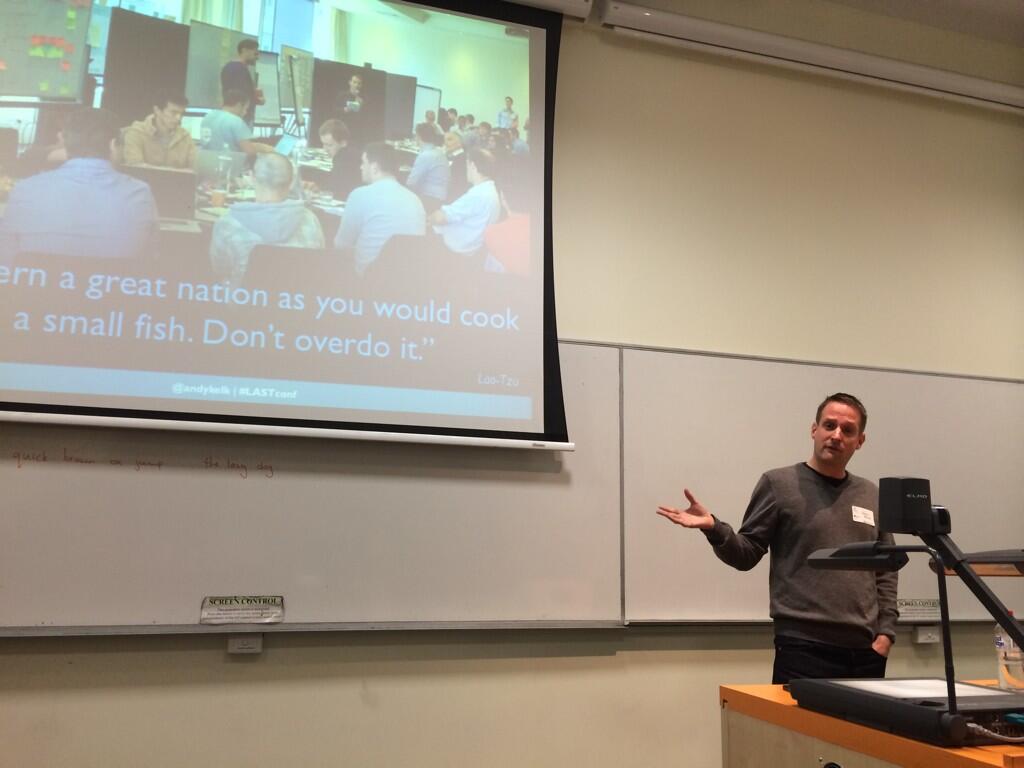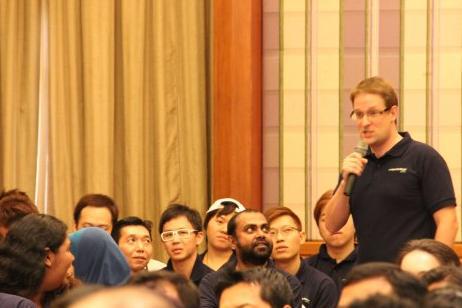A couple of things this week have got me thinking about public speaking. Firstly, I have been confirmed as one of the speakers for the Melbourne CTO Summit in December. Secondly, I was asked to help review submissions for one of the streams at Agile Australia 2015. In the last few years I’ve spoken at many events - Agile Singapore, Melbourne CTO School, at industry networking events, at an Agile symposium, WebCamp KL, AWS Cloud Kata and LAST Conference as well as lots of internal events (conferences, strategy days). I’ve also enjoyed listening to many great speakers at those same events, at Dare Festival, at the Foenander lecture and more.

I like to think I’m a pretty decent speaker. Despite being a confirmed introvert, I haven’t often shied away from getting up and talking. Whether it’s debating at school and uni, presenting on community radio or performing in Oscar Wilde (“My dear fellow, the way you flirt with Gwendolen is perfectly disgraceful. It is almost as bad as the way Gwendolen flirts with you”). These days it’s mostly in a professional context (although, my Algernon is particularly good if any local am dram societies are reading). From my position as an amateur speaker and professional conference attendee, I’ll attempt to give my answer to the question what makes a good presentation?
Emotion
Some of the best talks I’ve seen recently have come from a position of emotional vulnerability. The two which really stick out are Kent Beck’s talk Ease at Work which I heard at Agile Singapore and Kerri Rusnak’s Letting Go that she delivered for the first time at LAST Conference. In both cases, the speakers were talking about issues of identity and confidence that affected them in their work. That’s not an easy thing - we all like to present ourselves in public as being über-confident in what we do and who we are. But here’s two people getting up and talking about the doubts they have, the insecurities and about how they really feel. By exposing themselves and being vulnerable, both speakers made a connection with their audience in a way that they wouldn’t have if they’d presented dry facts about their roles and their successes.
Story
Which brings me onto the next topic - storytelling. This has become a bit of a cliché (if you’ve not seen Stefan Sagmeister on storytelling, file it away for future viewing.) However, using the structure and the power of a story can be very effective when you’re trying to get a message across. Shawn Callahan from Anecdote gave a presentation at Dare Festival which illustrates how stories are memorable and how we retain a lot more details about stories we’ve heard than about factual presentations. For instance, I still remember the story told by Nigel Dalton at a ThoughtWorks breakfast back in 2009 about the most expensive wristwatch in the world; there’s details of that story that I can recount now which would be long gone if he’d just given a presentation on the development process at Lonely Planet.
A common phrase used in writing is “show, don’t tell” - this applies equally when presenting to an audience. Don’t just bombard them with facts, show why it’s important, tell a story which illustrates what you mean. People will remember the details of a story much more clearly than a list of facts and figures.
Clarity
If we flip from some of the best presentations I’ve seen to some of the worst (I won’t name the offenders!), a common theme is over-dependence on detail - particularly in the slides. We’ve all seen presentations where the slide was filled with hundreds of bullet points and the presenter stood and read through them one by one. But it doesn’t have to be like that. I remember the first time I really noticed someone using simple, picture-driven slides. It was a presentation given by Mark Mansour who was talking about search relevance. He used slides which were mostly just photographs and a few key words. It was powerful because it let you focus on what he was saying and because some of the photo choices were humorous in the context used.

Since then I’ve mostly done presentations which rely on a similar structure - sometimes I’ll even just talk without slides at all. After all, if my audience want to read slides, they can head to slideshare and read to their hearts’ content. For instance, here’s the slides I used for a talk on AWS which add up to about 100 words. Recently I’ve also experimented with putting relevant quotes about the topic into the slides however I’m not yet convinced by that approach - I want people to be listening to me, not reading the clever quote on the screen.
Be yourself++
This one is easier said than done. Everyone gets nervous when they get up to speak; everyone. Even people who do it hundreds of times a year. (For instance, take a look at this Twitter exchange from Tom Peters). With practice, you can start to be more natural when speaking. There’s lots of advice out there on techniques to conquer nerves and different people have different things which work for them. For me, I’ve always been confident enough to get out and talk so I can’t give any specific tips which worked for me other than lots of practice. But however you do it, it’ll help more than any other tip. By being yourself and being natural, you will connect with your audience and get your message across; you’ll also speak more clearly as you slow down and pause appropriately.

However, don’t be afraid to become an amplified version of youreslf. At Dare Festival was my first time seeing Dr Jason Fox present and I was in awe of his presence and persona as he talked. He’s incredibly witty but also presented himself as very likeable and relaxed. Now, I’ve not met Jason but I would suspect that his presentation style is a dialled-up version of his normal self. Yes, he’s playing it up and emphasising certain aspects but he’s largely being himself and isn’t trying to fit a particular mould of the public speaker.
Practice and refine
One thing you’ll sometimes hear speakers say before they present is that they’re giving a presentation that they’ve given before. Sometimes that’s because it’s simply more efficient to re-use existing material that your audience hasn’t heard. But it’s also because it’s material they’re comfortable with and which they know they can do justice to. The same is true of other performers - stand-up comedians will do the same gags and the same show many times over, musicians rehearse certain numbers that they can play for different crowds; there’s no reason public speakers can’t do the same.
At the CTO Summit in December I’ll be doing a talk which I’ve given twice before. The first time I did it at LAST Conference, I’m not particularly happy with. The second time I did it at the Scaled Agile meetup was much more natural. I’m planning for the third time to be a knockout version. The only way to get comfortable with your material is to present it. Ideally do it a few times for friends or family and get it right before the big event. And if it does go well, don’t be afraid to do it again at another event. Make sure you refine your material as you go - add more of what went down well and remove the stuff which fell flat.
Unaccustomed as I am
Speaking in public and sharing your experience and thoughts can be a very rewarding experience and I know it’s one which I enjoy and will continue to practice and get better at. Everyone has a story to tell and experience to share - get out there and share yours. Just make sure you don’t roar.